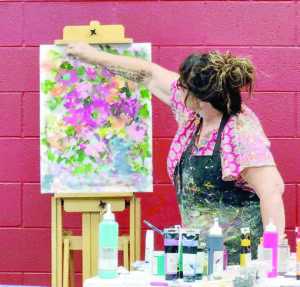By Sheila Harris sheilaharrisads@gmail.com
The consensus among local lenders is that the interest rate on ag loans is up from what they were six months ago — no surprise to those who hope to invest in real estate for agricultural purposes.
“The rates are the highest they’ve been since 2006,” said Reuben Henderson, with CS Bank in Cassville. “On June 29 that year, the prime rate was 8.25 percent; now, it’s at 8.5 percent. Today, a person is probably looking at paying around 9 to 9.5 percent for an ag loan (as of Aug. 22).”
Freedom Bank CEO Stan Kelley foresees that rates may even go a bit higher over the next six months.
“Even with the interest rates going up, though, the demand for farmland is still strong,” Kelley said. “And, fortunately, we haven’t seen the jump in prices that other areas have experienced.”
Trey Rose, AVP at First State Bank of Purdy, said the bank is active in farmland transactions.
“First State Bank continues to offer loans to help farmers get the financing they need for family farms,” he said. “Interest rates are the highest they’ve been in 22 years, but loan financing can be a powerful took in helping start, expand, or maintain a family farm.”
Joy Chappell, owner/broker at Flat Creek Realty in Cassville, said the going price tag for good cattle grazing land is $4,000 to $5,000 per acre.
“But, that’s only if it has good grass, tight fencing and some kind of plentiful water source,” she said. “Rough land won’t bring that much.”
Chappell cautions that a good realtor can keep people out of trouble when they’re looking to buy undeveloped land.
“Sometimes people get buck fever and buy rough land without figuring out how they’re going to get water and electricity to it,” she said.
“Even though the price of land is up, the market’s still strong,” said Larry Daniels, with Four Seasons Realty in Cassville. “The cattle prices are good, too. Sometimes I wonder how people are doing it.”
Chappell said she remembers in the 1970s and 1980s when land prices jumped from $350 up to $750 an acre, and she thought then, “there’s no way people can make it.”
Henderson said lending for poultry farming has slowed down a bit, a decline he surmises may be the result of Tyson closing its plant in Noel.
On a happier note, Henderson said interest rates are projected to go down again if we can weather the current rates and maybe another increase.







